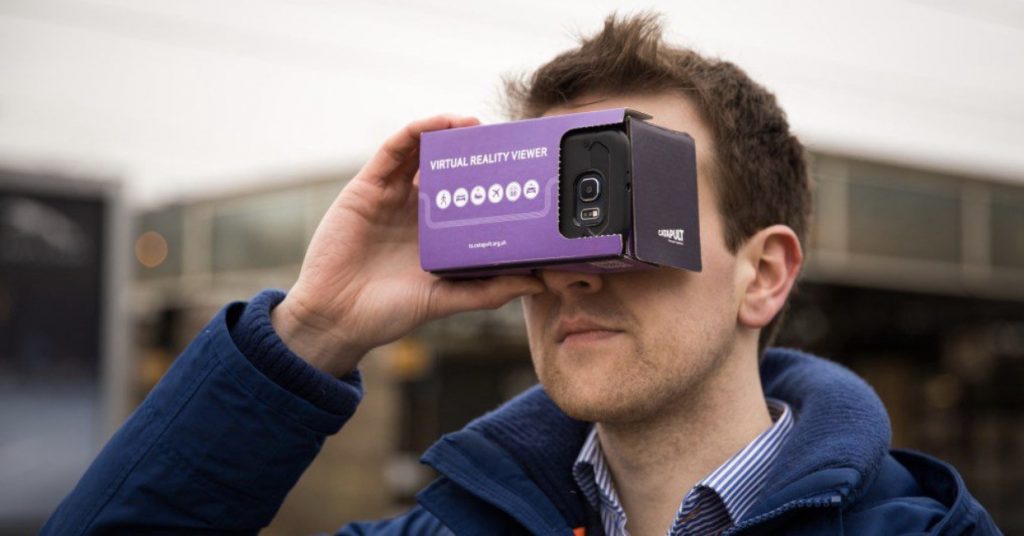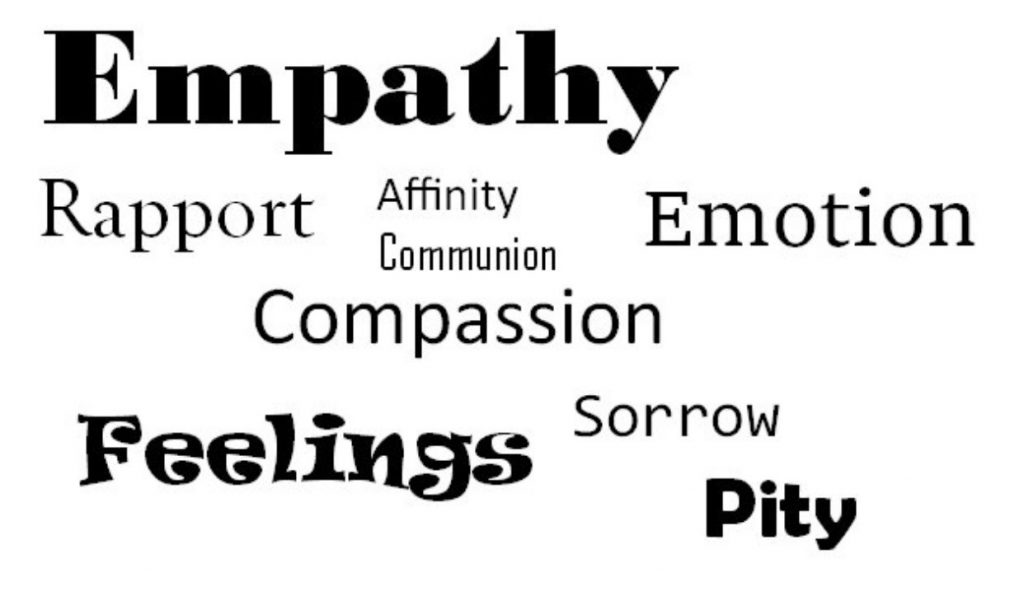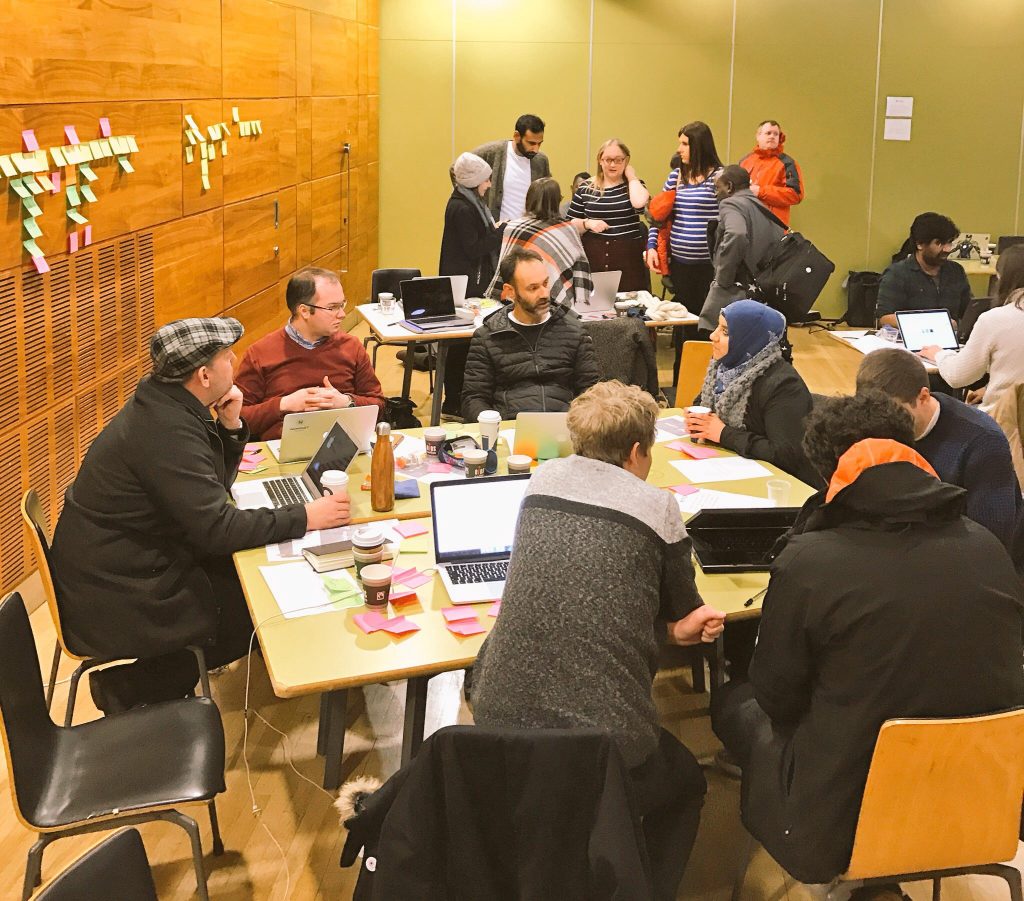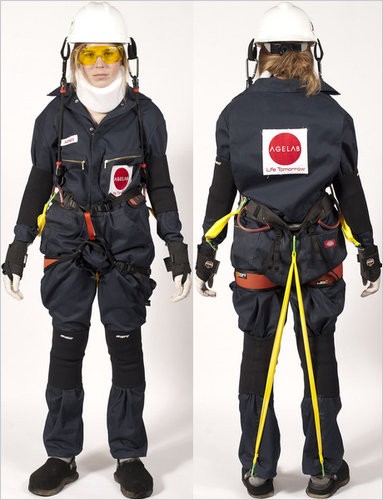
Eyeware is a new immersive app, just released by RNIB and the UK’s Transport Systems Catapult. It simulates different types of visual impairment.
Microsoft Design tweeted (later deleted) that it enabled you to feel like what it is to live with a serious eye condition.
This is very, very wrong. It is at the core of why empathy exercises don’t work.
Why do empathy exercises?
Empathy exercises are one of those interventions that sound brilliant but fail because people don’t understand how empathy works.
Here’s a word cloud of a few ideas related to empathy.

What people are generally attempting in empathy exercises is to develop a sense of affinity or rapport between people living with a specific impairment and people who have capacity to fund or design solutions.
Things start falling apart when people think empathy is a tool and make individual users of those attempting to be empathetic.
Empathy going wrong
Empathy is good but it is very hard to induce correctly, without tipping into compassion, or to guide well, without falling into emotion.
Compassion is perfectly valid. A sense of care for others. It’s not completely about affinity: the other person remains an other but it works.
Emotion is much worse.
Charities use a bastardised version of empathy in their advertising. Do an image search for charity adverts: look at how many pictures of a solitary child looking sad there are.
That’s Single Victim Effect. It’s about triggering empathy but converting it into emotions – specifically sorrow and pity. That way you’ll donate faster.
Empathy converting to emotion is the hard problem of using it in exercises. Most people cannot maintain empathy for long. It collapses into emotion (which is perfectly normal: emotions are part of the core meaning and decision making systems of everyone).
In empathy exercises, it falls either into the sad/pity zone or the fear zone. Neither of these are helpful. They other the supposed group that the exercise was about building affinity towards. They embed a sense of pity or, much worse, fear about the impairment.
Empathy exercises maintain the Othering of people with physical impairments and the fear of disability. This is why they don’t work.
Empathy that works

The missing piece from empathy exercises is people. Technology can induce states of impairment but people are how you contextualise it.
The photo above is from the Wayfindr hackathon earlier this year. It’s from the point in the weekend when a large group of people with different types of visual impairment came in, went round the room and chatted to the teams. Designers discovered what problems people actually had, blind people critiqued ideas and everyone has a good chat about life and about design.
The other problem with empathy exercises is they concentrate attention onto the incapacity of an impairment and not the capacities of a person.
Suddenly making a person blind is not making them feel like what it is to be a blind person.
It’s about making a sighted person afraid of losing their sight.
The instant loss, and the expected return of capacity, does not represent the actual experience of blind people.
Over their lives, they have balanced their capacities and developed life skills. These capacities are what needs exploring.
- The best way to discover is to talk.
- The best way to learn is to listen.
Empathy works but it needs to be part of active, engaged conversation.
Understand people as embodied, social beings.
A moment of personal impairment in an empathy exercise is nothing compared to the value of listening to a lifetime of disabilty and capacity.
Empathy in the future

In conclusion, I’m not actually against all these technologies to induce temporary impairments but I am against their use in a solipsistic, individualised way. Ageing suits like the one pictured above are useful in usability testing of new products (as is Eyeware at the start of this post). Stick either technology on a young person and tell them that’s what being an old person, or a blind person, is like is foolish.
Stick a blindfold on a sighted person and make them walk around. They’ll feel fear not empathy. They’ll remember that personal fear and that otherness. Maybe they’ll feel compassion to people who live with that experience every day but it’ll be compassion for the other.
Empathy needs people. Understanding needs context.
If you do empathy exercises: make sure you have many people with lived experience in the place too. Perhaps organise it like Whitney Quesenbery described at ConveyUX. Start with shared food and drink, start with conversations about subjects everyone knows about (sports, arts, TV, etc.). Then, slowly, expand the conversation to what people like and don’t like about how they experience these things. Now you can naturally explore the different ways people successfully use their capacities or fail due to disabilities in the environment. A shared sense of what is wanted, a shared exploration of what doesn’t work.
What people can learn is how others live their lives successfully but where the gains are that could enable more.